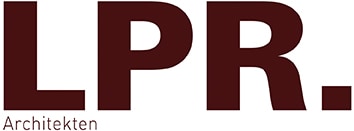4 Ways to Improve Construction Safety While Championing
It’s a misconception that one must sacrifice productivity to increase safety in the workplace.
With technology progressing and new ideologies emerging, experts have conceptualized approaches and ideas to help businesses increase their productivity while also ensuring their employees work safely.
Now, employees can work smarter not harder (and faster), utilizing these four ways to improve safety while maintaining productivity.
Curious? Let’s go through the four-step construction safety program.
1. Offer Safety Training and Awareness Curriculum
Safety training will help employees become more situationally aware and, as a result, decrease the likelihood of accidents.
The point is simple: Fewer accidents create more time to focus on required and established goals and initiatives which, in turn, improves productivity.
As new methods emerge, outdated safety practices are often proven to be ineffective compared to emerging theories and methodologies. As these concepts and theoretical practices are revealed, it is vital to integrate them into daily operations to increase safety and maintain production levels by further eliminating discrepancies and incidents.
In addition, it is always wise to have your employees up-to-speed on the latest changes in governing regulatory policies or general operational guidelines as it can reduce liabilities and risks overall.
In other words, don’t just offer safety training—make sure it’s up-to-date.
2. Champion Continuous Improvement
When workers know how to work safely, they establish continuity. Continuity can lead to revamped approaches and enhanced methods to complete the same tasks, faster and better.
As a result, the workplace becomes a paragon of continuous improvement.
Dedication to continuous improvement can result in increases in efficiency and productivity while ensuring a safer work environment.
These methods can be documented and further fortified into standard operating procedures. A continuous improvement champion will help sell the strategy and keep it a priority to revamp, revitalize, and re-tuned business processes.
3. Promote Respect in the Workplace
Respect drives safety.
According to EHS Today, respect in the workplace leaves a lasting imprint. Employees are more likely to succeed and foster positive results if their good practices are reinforced with progressive feedback.
This same idea can be applied towards safety. Incentives and rewards for adhering to safety practices or further developing working knowledge of various directives and guidelines can lead to a workplace environment that promotes safety.
In turn, these same approaches can be used to drive productivity. Respect is known to enhance communication and it has been proven historically that many accidents which hamper both safety and productivity are a direct result of a lack of communication. Respect is key and there is always a reason why so many say giving respect earns it, this is prudential in especially hazardous environments.
4. Introduce Lean Manufacturing
Lean Manufacturing or Six Sigma Methodologies are an emerging trend in material handling, production, procurement, and manufacturing industries.
A product of a technologically-driven era, Lean Manufacturing fuses the best business practices of yesteryear with the implementation of performance metrics and analytics that drive commerce in the modern era. Lean Manufacturing drives optimization of inventory, devises methodologies to increase productivity and efficiency and also identifies ways jobs can be less labor-intensive while also reducing risk.
The best precept about Lean Manufacturing is that any business can offer workshops on it and any employee can gain a wide range of practical knowledge on the subject, acquiring various colored “belts” that serve as a benchmark of expertise. Employees with these varying belts can take on differing responsibilities in unique situations, further allowing for more accountability and less direct responsibility for management inundated with tasks.

